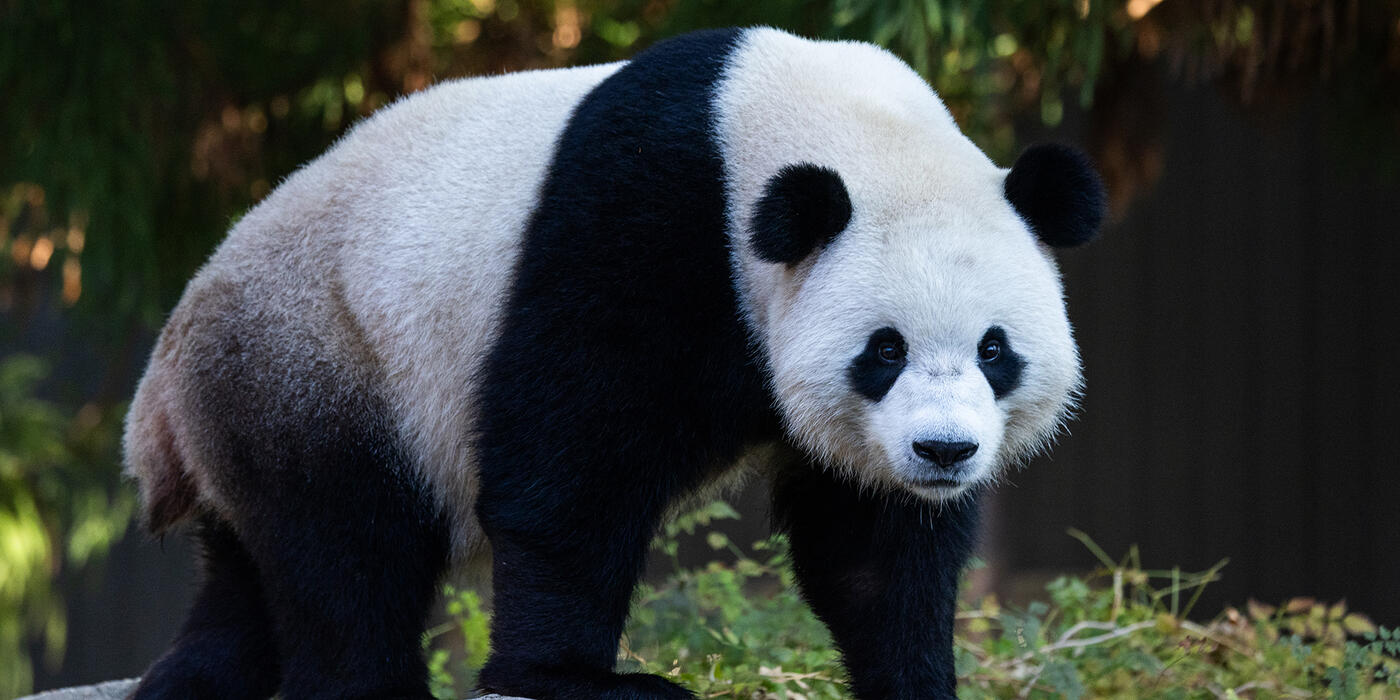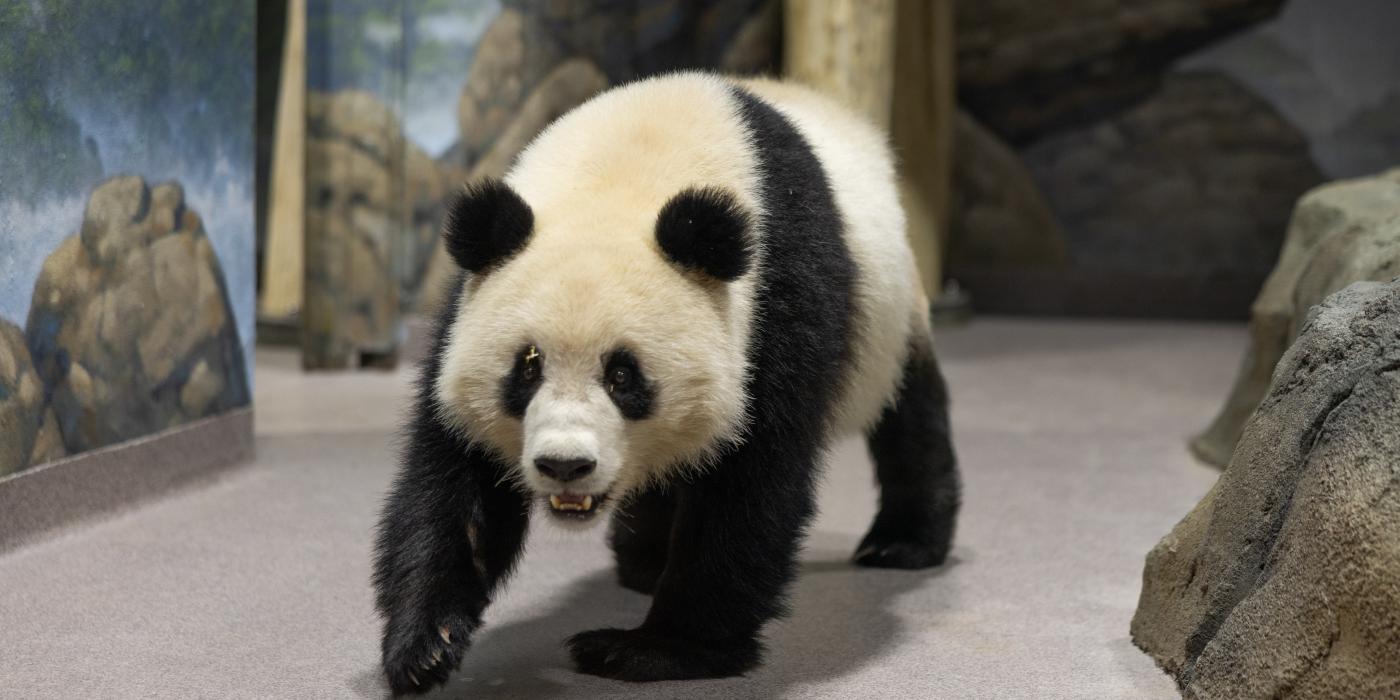To Keep the National Zoo’s Pandas Satisfied, Staff Prepare an Endless Supply of Bamboo
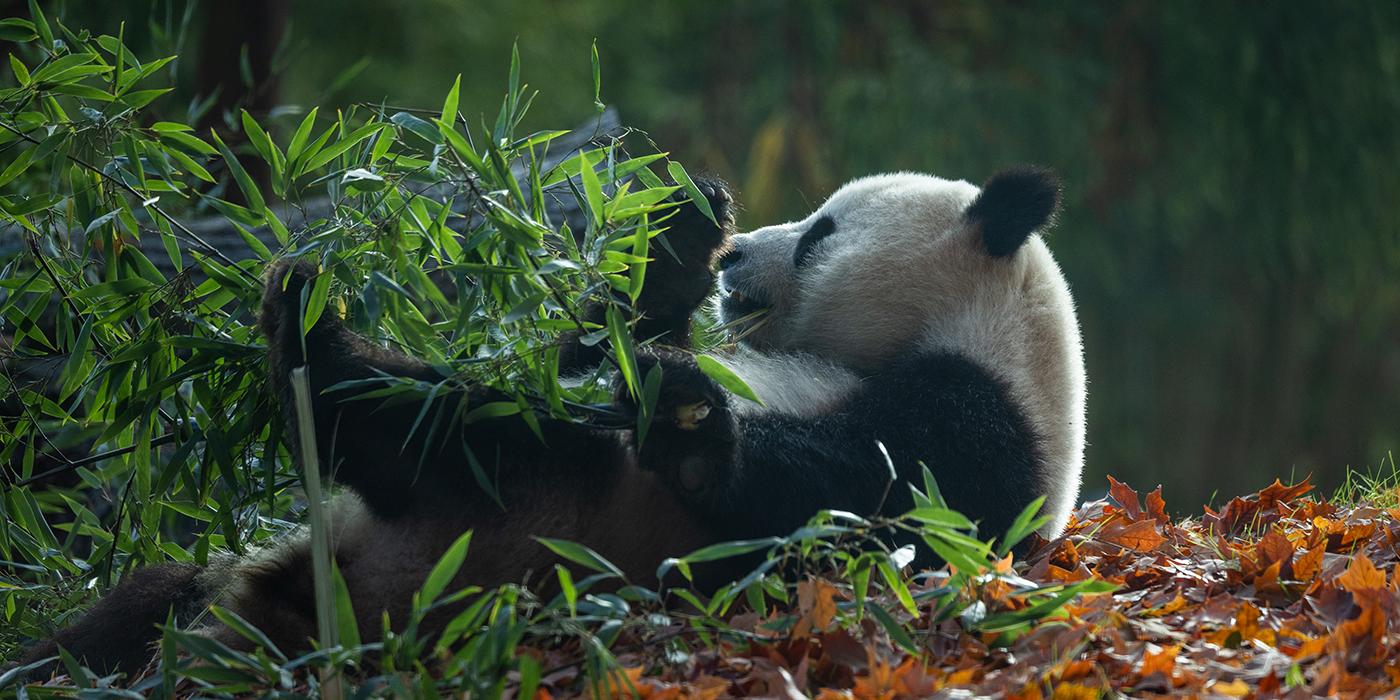
Across from the indoor pool, Bao Li flopped down near a pile of bright green bamboo. The giant panda stretched both arms forward, grabbing and pulling the cut end towards his mouth. With a turn of his head, he shredded and twisted the woody outer peel from the stalk. Chomping on the bamboo like a cigar, the hungry panda took in mouthfuls of crisp inner pulp. After just a few minutes, the entire stalk was gone. He leaned forward and grabbed another one.
While Bao Li ate his fill, Smithsonian National Zoo keeper Trish Jarvis watched carefully. She and the other panda keepers on Asia Trail pay close attention to which parts of the bamboo the panda consumes. Depending on the season and the type of bamboo, Bao Li and his exhibit mate, Qing Bao, might devour more than a dozen stalks each. On other days, they might only be interested in eating the leaves.
For a species that browses through 80-100 pounds (36-45 kilograms) of bamboo each day, giant pandas can be surprisingly picky in what they eat. That means caregivers at the Zoo are faced with a unique challenge: creating a daily menu that matches both the panda’s complex preferences and voracious appetites.
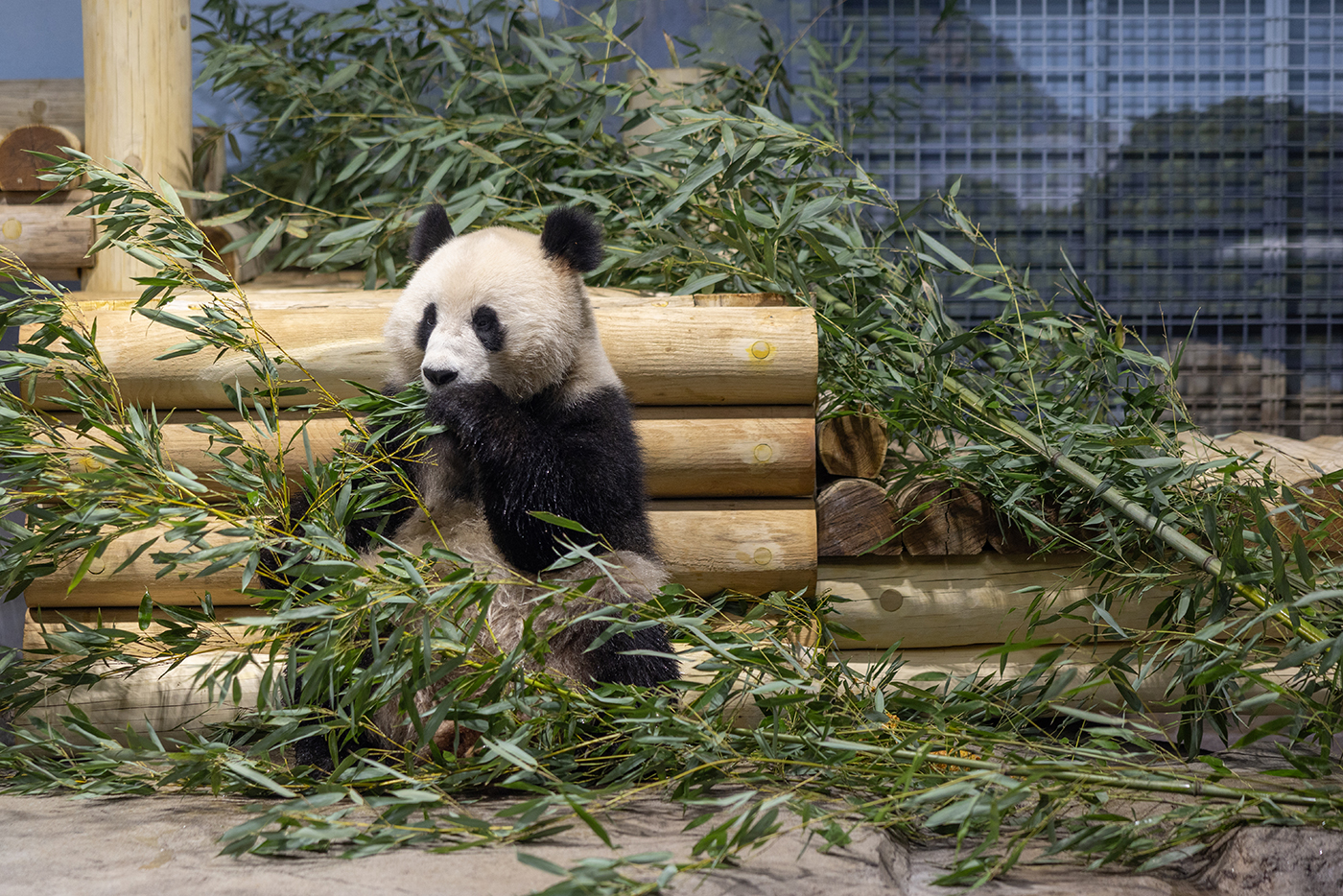
Qing Bao eats bamboo next to her climbing structure. To keep up with their voracious appetites, caregivers restock both pandas’ exhibits with fresh bamboo multiple times per day.
Bamboo: It’s a lifestyle
Around 95% of a pandas' diet is made up of bamboo, so a steady supply is key to maintaining a giant panda’s health.
At some point in the last few million years, pandas branched out from the diets of their bear cousins and began to focus entirely on the bamboo plant. During their evolutionary journey, pandas developed traits specific to bamboo-eaters—including a thumb-like appendage that allows them to grasp stalks more easily—while their preference for meat began to fade away.
However, bamboo has low nutritional density, and pandas’ digestive systems are still more similar to carnivores than herbivores. This means pandas need to eat massive quantities of bamboo to process and extract the vitamins and nutrients they need to survive.
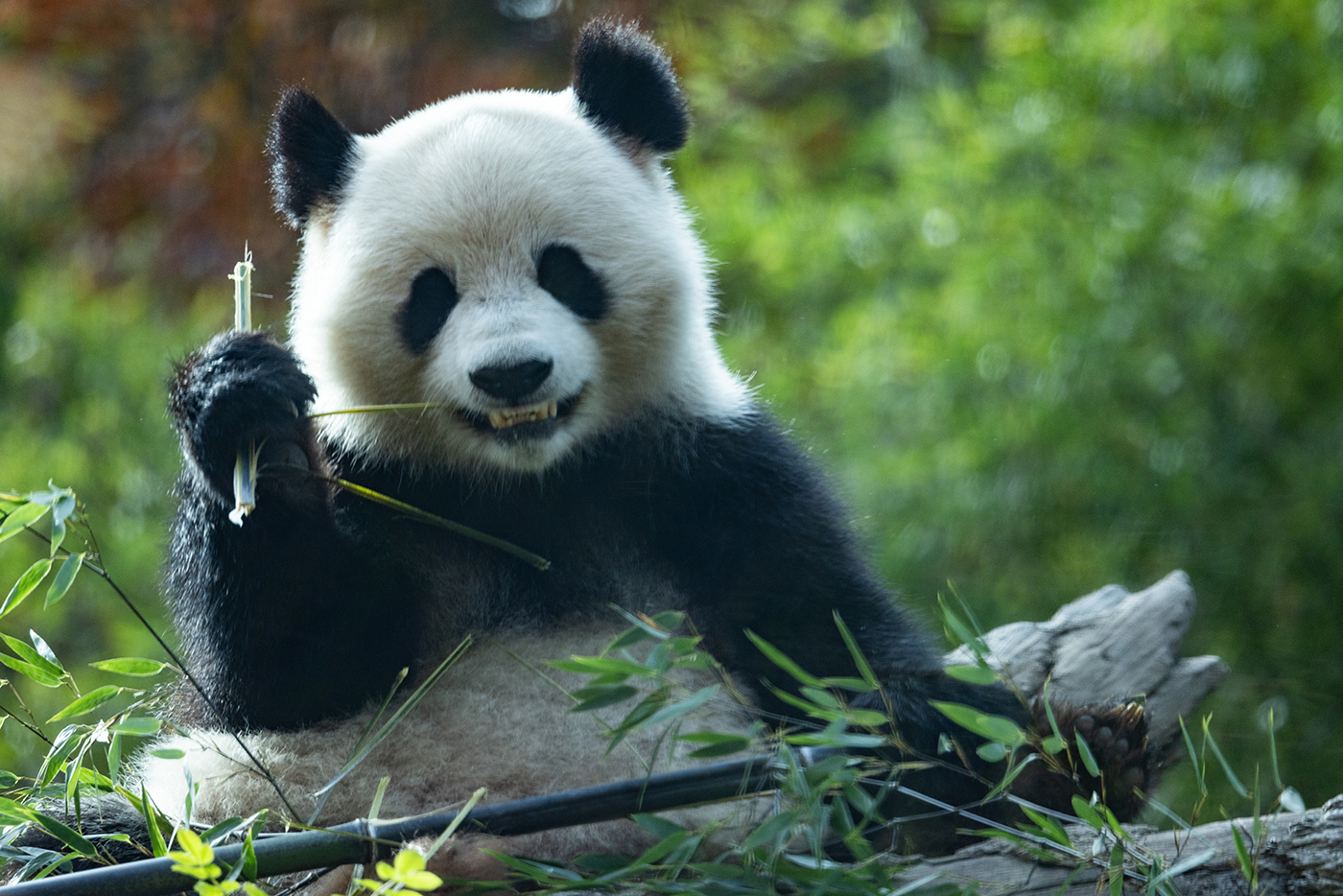
Qing Bao chews a stalk of bamboo. Each of the Zoo’s giant pandas are given around 95 pounds (45 kilograms) of bamboo each day, although the bears are selective about which parts they consume.
Bamboo flourishes in the giant panda’s native ecosystem. At the Smithsonian’s National Zoo, animal care staffers are faced with the surprisingly difficult challenge of adapting a wild pandas’ feeding strategy to a zoo environment.
"A farm-to-table approach"
Giant pandas spend 12-14 hours in a day eating. To match their appetites, Zoo staff must supply Qing Bao and Bao Li with massive piles of bamboo each day.
Three or four times a week, the Zoo’s Department of Nutrition staff orchestrate a complex routine of selecting, harvesting and delivering bamboo to the voracious vegetarians. A dedicated team from the Zoo’s commissary drives out to managed bamboo groves at undisclosed locations in the Washington, D.C. region. After chopping hundreds of pieces of bamboo by hand, the team will sort it, then pile it onto a truck. Next, the team drives their leafy cargo into the Zoo, dropping much of it off at the bamboo shed in the panda exhibit area. Once inside, the bamboo is labeled, rinsed and kept cool with automated water misters, just like the ones that keep parsley and cilantro fresh at your local grocery store. Finally, Asia Trail keeper teams place piles of bamboo next to each bear’s preferred resting spot, fresh and ready to eat.
“It’s basically a farm-to-table approach,” said Bill Clements, commissary manager at the Zoo.
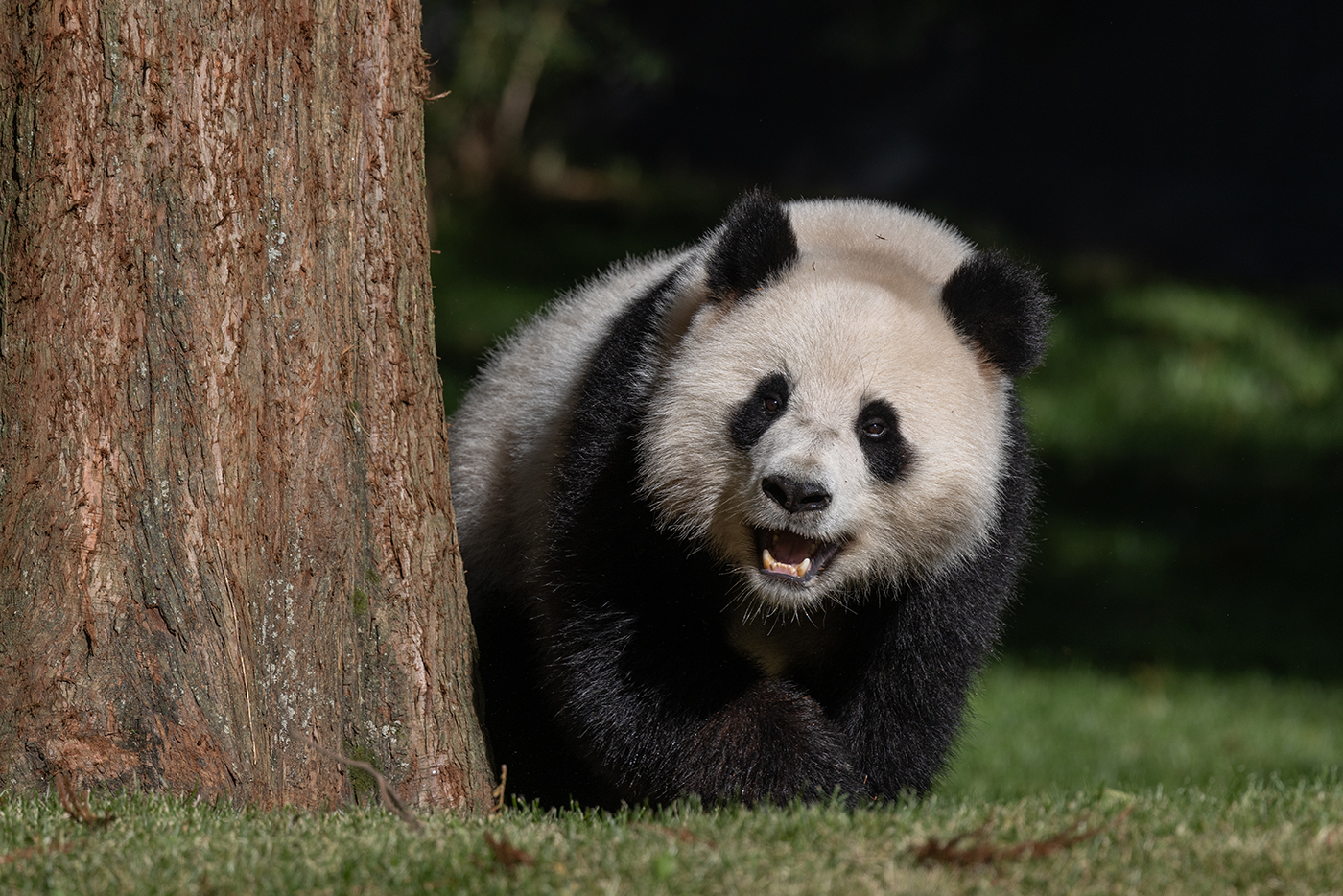
Qing Bao explores her outdoor yard. Giant pandas must search for plentiful amounts of bamboo to survive in their native habitat. Chinese wildlife officials are working to establish forest corridors that will help wild panda populations move across their range.
Pandas can be picky
The pandas’ tastes are not always predictable. Not only do they consume different parts of the plant at different times of year, they also have preferences in the species of bamboo, emphasized Jarvis. Both Qing Bao and Bao Li seem to have the strongest preference for arrow bamboo (Pseudosasa japonica), a leafy variety with thin stalks. But sometimes, they’ll reject it.
“They’re very selective. We try to provide them with at least two different species to choose from…so they’re able to pick out those really delicious pieces that are worth their time and energy to eat.”
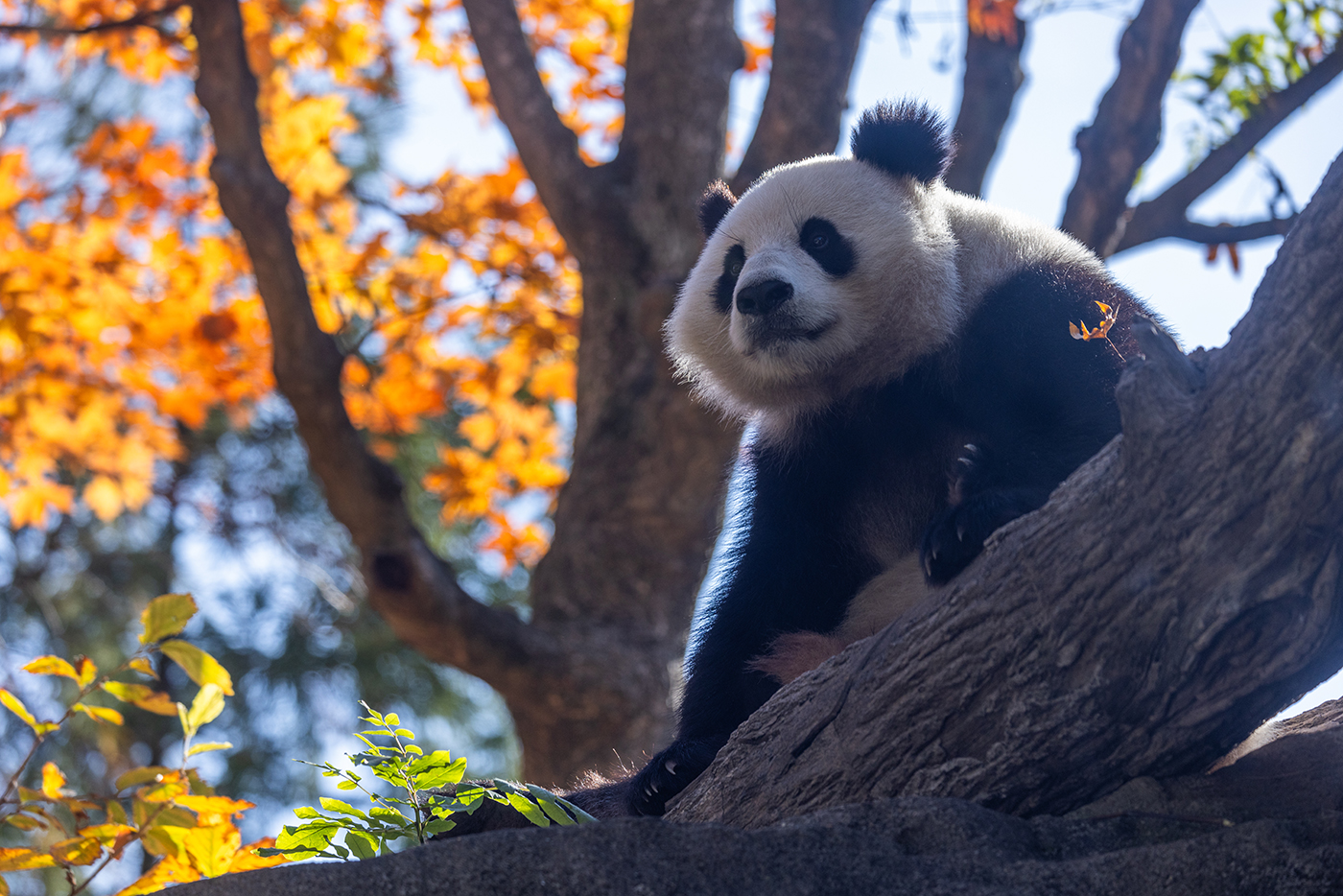
Qing Bao takes a break from eating.
Keepers like Jarvis take notes on precisely what each bear eats. If the panda doesn’t seem interested in a particular bamboo species, the team will pass that info to Commissary staff, who will collect another kind during their next harvest.
Bamboo rejected by the pandas doesn’t get thrown away, said Clements. Zoo staff redirect the rest of the harvest to other Zoo herbivores, like the Asian elephants and Western lowland gorillas, who tend to be less choosy about their daily greens.
'Panda bread'
As part of the effort to maintain consistency of care while the bears adjust to their new surroundings, Zoo caregivers were provided a recipe from their Chinese colleagues that currently accounts for a small part of each panda’s diet. The dense, flour-filled mixture is called “panda bread”.
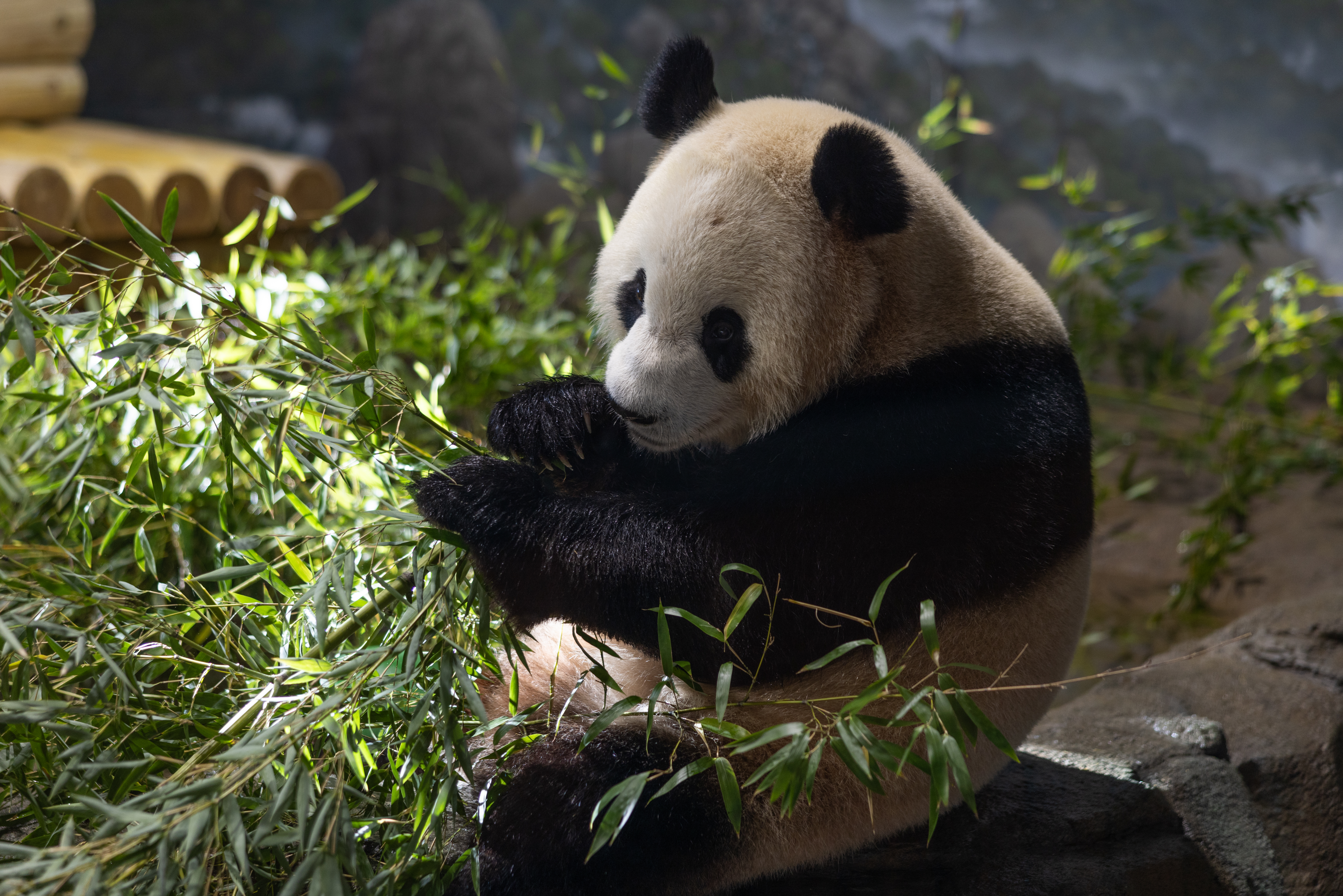
Bao Li munches on bamboo next to the artificial pool in his indoor area. The Zoo’s pandas also eat relatively small amounts of carrots, sweet potatoes, apples, pears, and panda bread. Soon, the bears will start receiving nutrient-packed "leaf-eater biscuits," favored by many of the Zoo’s other herbivores.
Panda bread is handmade several times a week by Zoo nutritionist Erin Kendrick, who mixes together large quantities of soybean, rice, and corn flours. Steamed for an hour, the end product is a dense, moist bread that provides a little variety to the pandas’ daily diet.
Although it smells just like cornbread, the flavor profile is definitely catered towards a panda’s palate, said Clements.
Jarvis and the keeper team come up with creative ways to present the panda bread to the bears. Sometimes, they’ll break the bread into pieces and scatter it through the bears’ outdoor yards—a strategy that encourages Qing Bao and Bao Li’s natural foraging instincts. Other times, they’ll give the bread to the pandas as a food reward for completing a training exercise.
Ultimately, what matters most to the keeper team isn’t so much what a panda like Bao Li eats, it’s that he’s eating bamboo that he likes, and in the massive amounts that are normal for his species.
“If he’s eating, I’m happy,” Jarvis said. “And fortunately, he’s a pretty good eater.”
Hungry for more giant panda updates? Tune into Prepping for Pandas, a digital series that takes you behind-the-scenes as Smithsonian's National Zoo experts care for these beloved animal ambassadors.
Related Species:

